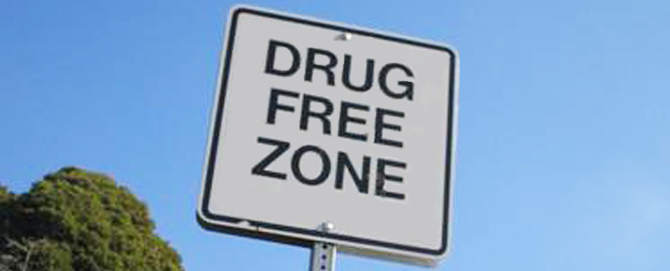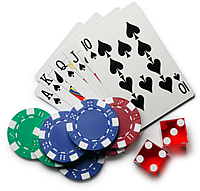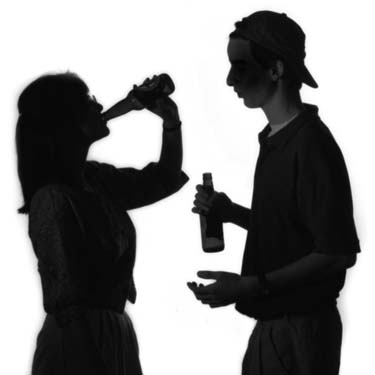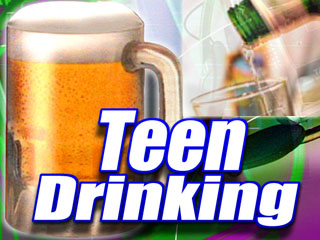Drug Testing
Parents may want to include drug testing kits as part of a family’s drug use prevention efforts, though parents shouldn’t rely on home drug tests alone to detect or prevent drug use, and many doctors recommend against home testing. Parents should learn about drug testing kits to decide if they are right for their family and situation.
Home drug testing kits generally involve taking a sample from the person and either using a test stick that gives a quick response or sending the sample to a lab that will process the test and return an answer. These types of tests are regulated by the US Food and Drug Administration. The tests that are sent to labs are kept confidential and may be ready in just a few days. These types of tests are usually very reliable. When using the types of tests that give immediate results, any positive results should be confirmed by a doctor or a lab.
Home drug testing kits can be purchased online or sometimes in local stores. When buying drug testing kits online, make sure that you are purchasing from a reliable company, such as one recommended by your local doctor or law enforcement agency. Most multiple-drug tests cost around $10 each, depending on the number and types of drugs tested for, and they are often sold in sets.
The samples that may be used for drug testing can include:
- Urine
- Saliva
- Sweat
- Hair
The collection methods vary. Urine is usually collected in a cup and then a stick is dipped in the sample, similar to a home pregnancy test. A patch placed on the skin may be used to gather sweat. Swabs can be used to collect saliva to be sent to a lab. Hair samples are usually collected directly from the person and sent for analysis.
Most of these methods can only tell parents if teen have been using drugs in the past few hours or days. Hair can potentially tell about drug use for up to one or more months prior to the test. It is also less invasive. The use of hair is less well-studied, however, and things like the texture and color of hair, as well as chemicals like dyes that have been used on it, may be able to affect the test results.
Drug tests can screen for a number of drugs, including:
- Marijuana
- Opiates
- Cocaine
- Amphetamines
- PCP
- Steroids
- MDMA
- GHB
Most drug tests only look for certain drugs, not for every drug a teen may be using. Alcohol is generally only detectable when the teen still has it in their system. There are some drugs that teens use that drug tests may not look for, such as some prescription drugs that teens abuse. This is one of the reasons that parents should not rely on drug tests alone to combat drug use in teens.
Another reason to be cautious about relying on drug testing kits is that some tests can be tricked. Most of the methods teens use to try to trick drug tests are not very effective, and some drug tests even detect substances that indicate that teens are trying to trick the tests. Still, parents should be aware that drug tests, though designed to be very reliable, are not foolproof. Also, tests may occasionally give a false positive. This is why positive tests should always be confirmed by a doctor or another source.
Parents may be tempted to drug test teens secretly, such as by taking a hair sample, but this is not usually recommended. Hair samples gathered secretly may be old, and may even belong to another person, such as if a friend used a teen’s hairbrush or someone at school was close enough to get a hair on their clothing. Also, testing in secret eliminates the potential of using drug testing to deter teens from trying drugs. It also may make it harder for parents to help teens if they find that they are using drugs, since the teens will lose trust in their parents and won’t be able to talk to them about their problem.
The American Academy of Pediatrics discourages involuntary or secret drug testing of young people because there is not enough evidence that home drug testing is useful in combating drug use. Drug testing is not always effective at detecting drugs, and may encourage teens to use drugs that less easily detected, including alcohol. Also, involuntary or secret drug testing may destroy family relationships and do other harm to teens.
If parents are concerned that their teens may be doing drugs but don’t want to use a home drug test, they can take their child to a doctor for drug testing. This also has the advantage of including medical advice and other types of drug and health screening along with the drug test.
If parents decide to use home drug testing, it should not be used to punish teens for drug use. Instead, it should be used to find teens who are using drugs and get them help. Random drug testing may be able to help to deter drug use, and may be able to catch teens who have a drug problem. Drug testing alone, however, is not an effective way to prevent teens from using drugs. The best things parents can do to help their teens are:
- Talk to teens about why they shouldn’t use any types of drugs and express their love and concern for them
- Monitor the teens’ behavior
- Set clear rules against using drugs and enforce reasonable consequences if the rules are broken
Teens who have a drug use problem need counseling and perhaps medical intervention to help them deal with their problem and overcome any addictions that they have. Parents can find counselors or drug recovery programs through their doctor or local health department. Many programs are available for no or low cost to those who cannot pay for medical services.
Drug Testing Kit Sources:
Dr. D. Bruce Burlington, US Food and Drug Administration, News and Events, [Over-the-counter Test Kits for Drugs of Abuse” [online]
National Institute on Drug Abuse, “Frequently Asked Questions About Drug Testing in Schools” [online]
American Academy of Pediatrics, Pediatrics Journal, Policy Statement, “Testing for Drugs of Abuse in Children and Adolescents: Addendum – Testing in Schools and Home” [online]



